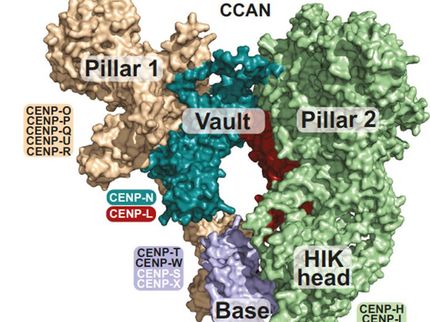A protein coat helps chromosomes keep their distance
Researchers at IMBA – Institute of Molecular Biotechnology of the Austrian Academy of Sciences have identified a protein that disperses chromosomes during cell division.
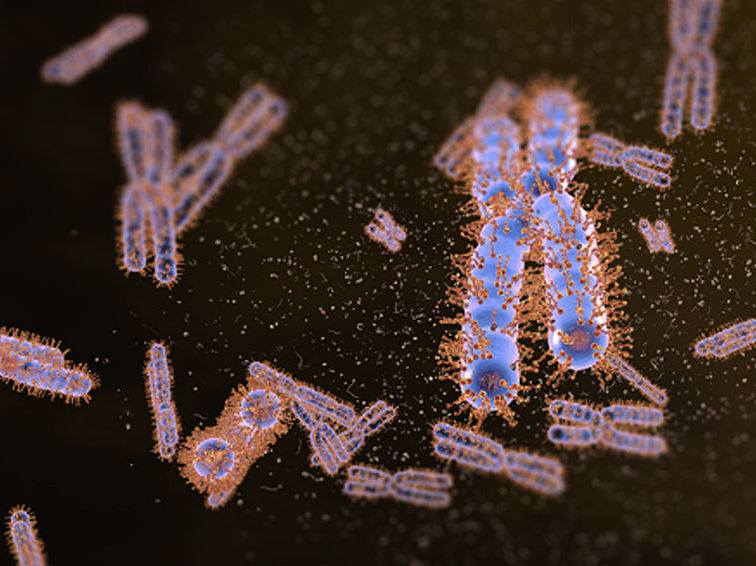
The protein Ki-67 plays a key role in the spatial separation of chromosomes during cell division: One end of the protein attaches to the chromosome; the other end extends away from it. These “surfactant” properties prevent chromosomes from clustering together and enable their independent motility.
(c)IMBA
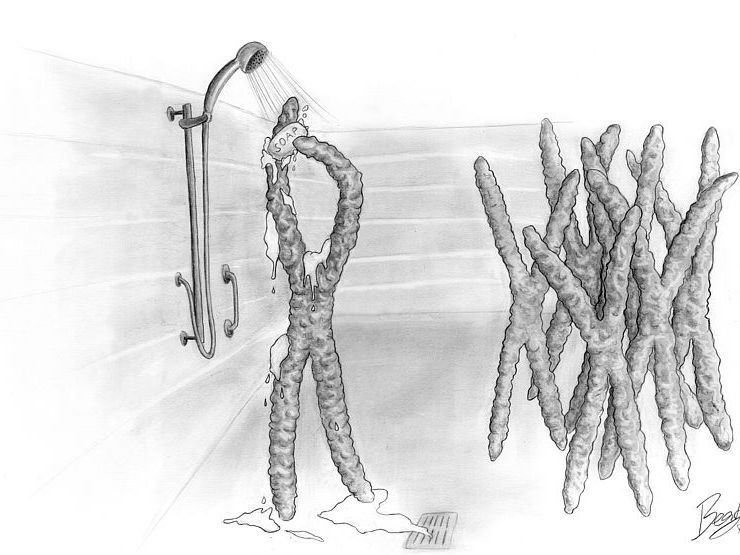
The surface of chromosomes is covered with surfactant-like proteins during cell division. These proteins act similar to soap to disperse chromosomes and prevent them from clustering together.
(c)IMBA/Mierzwa
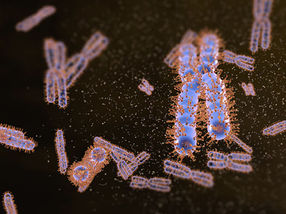
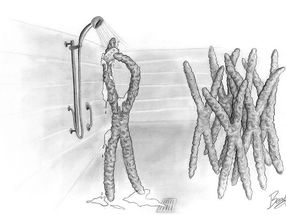
Billions of your cells divide every day. Cell division fuels growth and also replaces short-lived cells in some organs, like your skin, blood, and gut.
Dividing cells cycle through different stages. During most of this cycle, cells are at work expressing genes. At this stage chromosomes are spread out as a network of long threads that fill the entire volume of the cell nucleus. As the cell prepares to divide, the chromosomes replicate and undergo a dramatic metamorphosis. They compact into iconic X-shaped bodies which can move around independently to transport one copy of the genome to each of the daughter cells. But what enables this “individualization” of chromosomes in dividing cells has been a mystery.
A team led by Daniel Gerlich at IMBA discovered that the protein Ki-67 prevents chromosomes from sticking together in dividing cells. Ki-67 is a well-known marker of proliferating cells and is used in cancer diagnostics to measure erratic cell division. But the function of Ki-67 in the cell was unclear. Their findings, published in the current issue of Nature, show that the chromosomes can still compact without Ki-67, but they merge into a single mass and are essentially immobile. As a consequence, cells lacking Ki-67 divide more slowly.
The team set out to determine how Ki-67 disperses chromosomes in dividing cells. Sara Cuylen, first author of the study, explains: “one end of the Ki-67 protein is attracted to chromosomes, whereas the other end extends away from them. As a result, Ki-67 forms elongated brush-like structures at the chromosome surface – essentially a barrier that keeps them apart.” These properties of Ki-67 are reminiscent of surface-active agents (surfactants) like soap – which we use daily to break up dirt and grease. That proteins can function as surfactants inside the cell was completely unexpected.
Daniel Gerlich points out that a surfactant mechanism might also control the spatial arrangement of other cell organelles: “The cell contains many other compartments that are not confined by membranes and it was previously unknown how these compartments maintain spatial separation. It will be exciting to search for other proteins with surfactant-like properties, and to study their potential role in cellular organization”.
Original publication
Other news from the department science

Get the life science industry in your inbox
From now on, don't miss a thing: Our newsletter for biotechnology, pharma and life sciences brings you up to date every Tuesday and Thursday. The latest industry news, product highlights and innovations - compact and easy to understand in your inbox. Researched by us so you don't have to.
